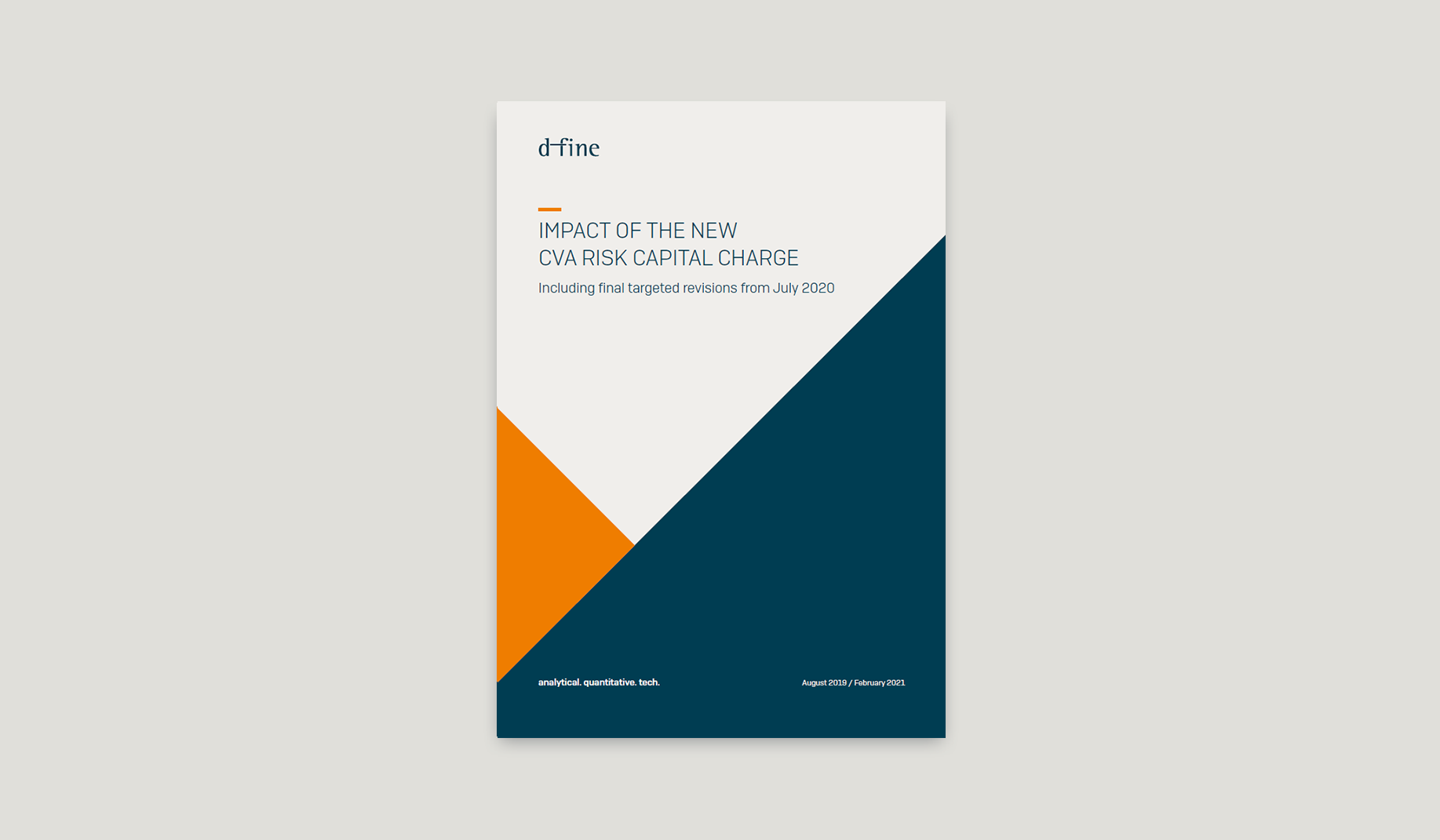In July 2020, the Basel Committee on Banking Supervision (BCBS) has published the final targeted revisions to the calculation of the new CVA risk capital charge (BCBS 507), with implementation date January 2025.
The most important results of this paper are:
▪ Compared to the current standardized approach, BA-CVA will increase the CVA risk capital charge for many uncollateralized portfolios,
▪ Collateralized portfolios (and portfolios with exposure hedges) will significantly benefit from SA-CVA.
The new CVA risk regulation framework can be a turning point for many medium-sized banks. For those, the capital savings entailed by the SA-CVA for collateralized portfolios may outweigh the costs associated with the introduction and maintenance of a Monte Carlo based CVA sensitivity computation framework as well as an active CVA desk.
Banks should prepare now, conducting individual impact and gap analyses and getting their CVA sensitivity calculations and CVA hedging activities running in time, to avoid falling into the BA-CVA capital trap.






